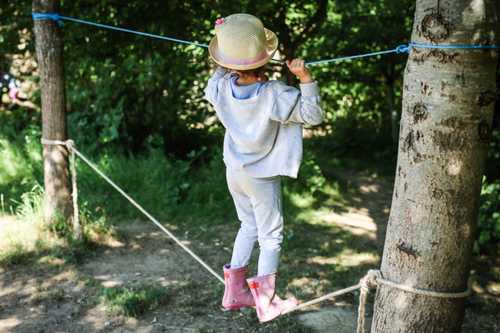






- Maintaining high levels of well-being
- Providing a challenging environment with autonomy, where possible, allowing them to choose what to do (child-initiated play)
- Responding ‘in the moment’ to a child’s activities to maintain and stretch engagement further
- Providing consistent boundaries, expectations and routines


- Provide consistent boundaries, expectations and routines
- Go to the children, get down to their level and be interested in what they are doing
- Be relaxed
- Listen to what the children are doing, watch and wait and plan their interaction with the child during this time
- Allow the child to lead the interaction. If they have questions answer them. If they would like the practitioner to join the ‘tea party’ then the practitioner is encouraged to join
- Respond appropriately, ponder and reflect
- For younger children focus on the prime areas
- Weekly and In the moment Planning
- Staff use ITMP to support planning for the children alongside focused activities agreed as part of weekly planning. Focused activities may increase in the case of school readiness or children who have SEN.
- This type of planning involves looking, listening and noting, children’s interests and planning what to do next in that moment.
- Observations and Moments
- Supervisions
- Wellbeing and Involvement Assessment (see Appendix C) – children who feel positive and involved will learn better. Our nurseries want to nurture a sense of wellbeing
- Interests and Play Assessment (see Appendix D) – to understand how engaged and motivated the children are and how they are using the environment around them.
- Summative Assessments (including Two Year Checks)
In the moment planning is a concept that involves allowing child initiated, real time, learning through play based on capturing the interest of a child at the current time. Responding immediately to children’s interest is the most powerful way to teach in early years. The practitioner uses skills to observe what the child is doing and needs to do next, assesses the ‘teachable moment’ from the child’s perspective and is skilled enough to know when to intervene and when to stand back and observe.
We operate in the moment planning using the following principles:
All observations of children will be recorded in our electronic observation system (FAMLY), which our parents are granted access to when joining the nursery (See FAMLY section below).
Your child’s key person will upload a minimum of 2 detailed observations a month linked to learning and development that your child’s key person has been planning for. Observations will usually be linked to the Seven Areas of Learning and Characteristics of Effective Learning.
Moments will be less detailed and not linked to any areas of learning. We use these when we want to let parents and carers know what their children have been up to in a snap shot.
Parents and carers are encouraged to upload photos of importance onto FAMLY, allowing practitioners to talk to the child about these photographs and experiences consequently extending their learning.
Observations during Transitions
When a child is starting nursery or transitioning to a new room we encourage our practitioners to capture more observations and moments of their children’s activities during these times so parents can see and talk to them about their experiences at home.
Supervisions take place every 3 months and are an opportunity for each practitioner to discuss their key children and the progress they are making.
Before attending their supervisions team members are asked to complete the following for each of their key children:
In the supervision meeting practitioners will talk about each of their key children, including the outcomes from the assessments they have completed in advance. Discussing their children’s progress and planning what next for them is the flexible part of our curriculum.
The outcomes from these meetings feed into the Room Development Plan (RDPs), Professional Development Plans (PDPs) and all Planning.
The nursery uses FAMLY to undertake Summative Assessments of each individual child, at regular, timed intervals.
Baseline: This is completed in partnership with parents when the child joins the nursery to give a baseline of their learning to date. Approximately 6 weeks from the child’s start date they will receive a short written assessment by their key person detailing how well they are settling in, how their relationships are developing and whether they need any additional support against the three Prime Areas Learning.
Summative Assessment: These will be completed every 12 months and will usually be undertaken when the child moves between rooms at nursery. For children under the age of 2 progress will only be marked against of learning. For children aged 2 and older progress will be marked against all areas of learning.
Two Year Check: The assessment written close to the child’s second birthday will be considered the Two Year Check. This is made available for parents and carers to take it with them to the child’s Two Year Check with their Health Visitor.
More information surrounding the Two-Year Check can be found at: www.foundationyears.org.uk
